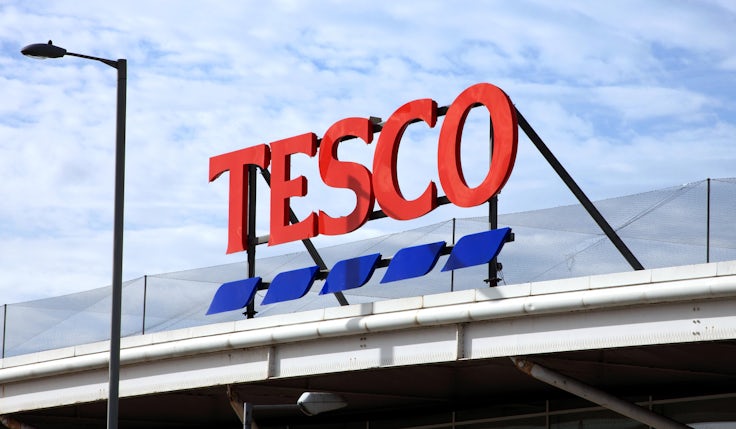Tesco chief: ‘I don’t see marketing as a cost. I see it as an investment’
As Tesco raises its profit forecast on the back of easing food cost inflation, its chief executive looks to highlight provenance and loyalty in marketing spend.
 Tesco has released its interim results for the first half of 2023, revealing strong performance in sales and market penetration.
Tesco has released its interim results for the first half of 2023, revealing strong performance in sales and market penetration.
The supermarket chain has reported retail like-for-like sales up 7.8%, with much of that driven by the UK and Republic of Ireland. As a result, it is adjusting forecasts for its operating profit to be between £2.6-£2.7bn. It had previously forecast £2.5bn.
And while Tesco is aggressively pursuing its ‘Save to Invest’ programme of cost-saving methods, its chief executive Ken Murphy said its marketing strategy is not impacted: “I don’t see marketing as a cost. I see it as an investment. We obviously challenge ourselves to optimise our marketing and make sure we get the best bang for our buck, but we don’t see it as a cost line to save money from.”
Its retail operating profit is up 13.5% on a constant basis, reaching £1,417m, despite a significant decline in the performance of its Central European branches as a result of price pressures and inflation in Hungary.
In the call accompanying the results, Murphy cited the chain’s focus on price matching and value via its Clubcard scheme as being at the heart of its success. “We know how challenging it is for many households across the country as they continue to grapple with the ongoing cost of living pressures,” he said. “We’ve worked hard to make sure our offer is as competitive as possible, and during the half we cut prices on around 2,500 products with an average cost saving for customers of around 12%.”
Tesco claims its ‘relentless focus’ on value is paying off despite profits halving
To that end it is positioning itself as a full-line alternative to the premium retailers, by highlighting its range of products and savings in its marketing.
In reference to the claim by M&S chief executive Stuart Machin that he believes it is “strange when retailers use other brands for their advertising”, Murphy said he believes Tesco is positioning itself as an alternative to its competition through more direct methods.
He said: “We like to let our products do the talking, if I’m honest. All our efforts go into the actual product innovation itself. All our finest products are benchmarked to be as good, if not better, than either M&S or Waitrose. Our ambition as a food innovation team is to be the premium retailer for quality, but [also] definitely for value every time. That’s a really successful formula.”
In September, its chief customer officer Alessandra Bellini announced she was leaving the role after seven years. The business confirmed it will not seek to fill the role, instead creating a new unit headed by group chief commercial officer Ashwin Prasad.
Tesco was a pioneer of the supermarket loyalty scheme with its Clubcard, and it continues to be a driver of revenue for the business. Clubcard sales penetration was up in all businesses, with the UK and Republic of Ireland both up 80% in terms of penetration. That translates to 7.5m UK customers using their Clubcard membership at the till, up 62% year-on-year.
Murphy explains that Clubcard is also “at the heart of our plans on personalisation”, and in the half issued 86m personalised coupons to nearly 6 million customers.
Murphy noted that over H1, Tesco matched Aldi line-for-line on 650 products “so any given day, [on] somewhere between 1,500 and 2,000 lines, a customer doesn’t have to look anywhere else for a cheaper product to shop”.
Tesco, then, is positioning itself to relentlessly highlight its discounts and price-matching efforts to consumers. With 27% of market share it is well placed to dictate its own pricing strategy without direct reference to its competitors.








Comments